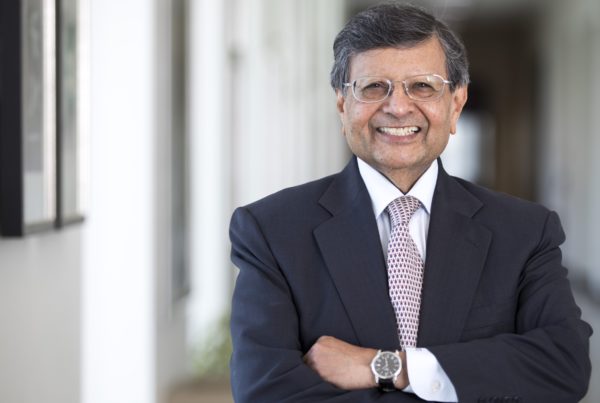Published: Feb 13, 2002 in Knowledge@Emory
For Kmart, even the reintroduction of the blue light specials could not keep the ailing company from filing bankruptcy recently. But unlike the public perception, Chapter 11 bankruptcy often provides a company with a second chance to restructure and prune its operation. Some Emory scholars say this filing may actually be good news for the Detroit-based discount giant, giving it an opportunity to make a fresh start after years of strategic and operational mismanagement.
Bankruptcy under Chapter 11 isn’t necessarily a death sentence, says James Rosenfeld, professor of finance at Emory University’s Goizueta Business School. “The whole idea is that you want to go into Chapter 11 so you can eventually get out of Chapter 11,” he explains. A number of well-known companies, including Federated Department Stores, have filed for bankruptcy protection and then lived to tell the tale.
Thanks largely to an unforgiving economic climate, Kmart is one of a number of large companies that went into bankruptcy this year. Another recent entrant, Global Crossing, a data-transmission company, filed bankruptcy after choking on debt and falling bandwidth prices. In all, 22 of the Fortune 1000 declared bankruptcy in 2001, according to a recent report of the American Bankruptcy Institute. In addition to the glitzy new economy blow-outs, the line-up included such familiar household names as Sunbeam, Converse, and Polaroid.
Not all of these high-profile bankruptcies were filed under Chapter 11. One unusual characteristic of recent corporate bankruptcies is a sharp rise in filings under Chapter 7 of the bankruptcy code in 2001, according to December 2001 statistics published by the ABI – an increase of 16.5% filing under Chapter 7 compared to a 7.5% increase under Chapter 11. Unlike Chapter 11, a Chapter 7 filing really is the end of the line for a company. A Chapter 7 filing results in a winding up of the business and liquidation of the company’s assets to pay its creditors.
George Benston, professor of finance at Goizueta, says creditors typically favor a Chapter 7 filing if they believe that the company is worth more dead than alive. Those increasing Chapter 7 numbers may reflect more skepticism by creditors or the courts about restructuring plans. In the 1980s, there were several cases of companies that used the Chapter 11 credit protection as an opportunity not to restructure but to keep the same old money-losing machinery running a little longer, according to Benston. Eastern Air Lines was one company that used the protection in a way that ended up helping no one but the bankruptcy lawyers.
“For a retail outfit like Kmart, Chapter 11 is a very good way to try to restructure operations to a core you can get out of bankruptcy with that is profitable,” says Ralph Brubaker, a professor of law at the Emory University School of Law.
Retailers go more frequently into Chapter 11 than many other kinds of businesses, mostly because there are typically very few assets for creditors to acquire, explains Jagdish Sheth, professor of marketing at Goizueta. Since even the physical storefront is typically leased property, there aren’t many assets to the company’s name besides good will and other “going concern value” it might have – in the case of Kmart, basically its brand recognition and the trade of millions of Kmart shoppers.
There are other advantages to Chapter 11 as well, according to Brubaker. The most important in Kmart’s case is probably a provision that allows a company to get out of long term leases that would ordinarily be expensive for the company to extricate itself from. Bankruptcy protection allows the company to break an undesirable lease if it’s expensive relative to the current market or if the lease is held at a below-market rate, to sell the lease at a premium, he explains.
Chapter 11 is based on a system of equity receivership first developed about a hundred years ago, according to Brubaker. Federal judges came up with these practices to solve a problem created by a number of insolvent railroads, he notes. The judges did not want to shut the railroads down, which would destroy the value of the enterprise, but at the same time, needed a way to restructure their business so that creditors would be paid.
Emory business scholars were unsurprised by Kmart’s filing. Most of Kmart’s troubles had been apparent for at least 15 years, notes Russell Coff, professor of organization and management. Sheth concurs and says that Kmart’s biggest mistakes were not stopping Wal-mart’s expansion into rural areas, which gave the Bentonville, Arkansas company a strong base, and not updating its inventory technology, which gave Wal-mart another key competitive advantage. Hemmed in on one side by Target, which went after a more style-conscious market, and by Wal-mart on the other, whose efficiency ensured a price advantage, Kmart had no clear way to fend off its competition, according to Sheth.
One short-term tactical issue that Kmart is dealing with right now, according to Brubaker, is the question of public perception. For a retailer, one of the only downsides of Chapter 11 is the public response to the bankruptcy filing, since the perception of viability is an important part of a retailer’s actual viability – nobody wants to shop at a store they believe is on its way out. “You have to actively manage the PR process when public image affects the viability of the business,” he explains.
The idea of allowing companies to continue operating while they make these changes isn’t always well understood by the general public, Brubaker says. “The reason we allow companies to continue operating even though they aren’t fully paying all their creditors is essentially for the creditors’ benefit,” he explains. Chapter 11 allows a company to reorganize itself so that it can be in a position to eventually pay back its creditors, and do it without the social disruption that might otherwise result from the collapse of a large organization.
Can restructuring renovate a store even Martha Stewart couldn’t spruce up? Sheth seems optimistic. “Kmart will come out of Chapter 11, and just like Chrysler, the shareholders will actually do quite well,” he predicts.
Sheth believes that Kmart will survive either by pruning its 2100 store empire back to just those stores that are still profitable, and stocking only that merchandise that does well in those stores, as A&P reorganized itself after losing a punishing fight with Kroger’s and Safeway; becoming a specialty retailer, much as Woolworth’s did when it shut down the last of its U.S. dime stores in the late 90s, and turned into a holding company for such shoe retailers as Foot Locker; or by merging with a smaller but nimbler player intent on growing into the number two chain in the industry, such as the midwestern Meijer chain of hypermarkets.
Of the three possibilities, Sheth believes that the second possibility, that Kmart will enter the specialty retail business, is the most likely. Revamping the aging stores would pose significant difficulties for an acquiring partner, the most basic difficulty being that most Kmart stores are only half or a third of the size of the increasingly popular hypermarket format – 70,000 to 90,000 square feet compared to the 200,000 square feet box the gargantuan stores fill, places that Sheth describes as having 50 checkout counters, where shoppers can buy everything from “potato chips to a boat.”





